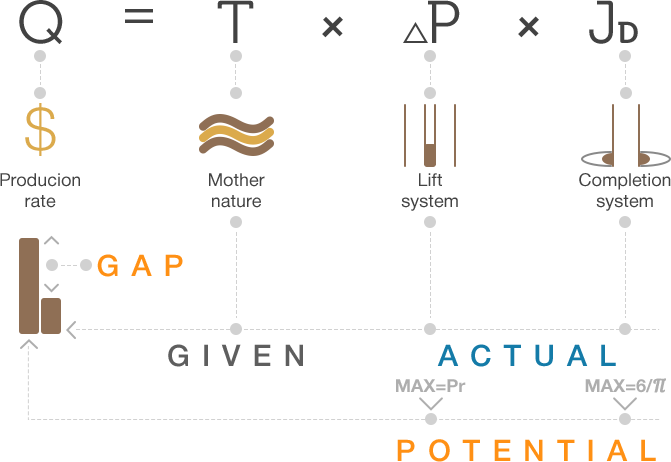Difference between revisions of "Production Potential"
From wiki.pengtools.com
(→Math and Physics) |
|||
| Line 13: | Line 13: | ||
where: | where: | ||
| − | :<math>T</math> is the [[Reservoirs | Reservoir]] transmissibility and is given by the [ | + | :<math>T</math> is the [[Reservoirs | Reservoir]] transmissibility and is given by the [https://en.wikipedia.org/wiki/Mother_Nature Mother Nature], |
:<math>\Delta P</math> is the '''Lift System''' Drawdawn which is set by the operational engineering practices, | :<math>\Delta P</math> is the '''Lift System''' Drawdawn which is set by the operational engineering practices, | ||
:<math>J_D</math> is the '''Completion System''' dimensionless productivity index which is set by the design engineering practices. | :<math>J_D</math> is the '''Completion System''' dimensionless productivity index which is set by the design engineering practices. | ||
Revision as of 13:09, 11 July 2018
Contents
Brief
Production Potential is the maximum rate that can be delivered by Well, Pattern, Block or Reservoir.
Math and Physics
The Darcy's law can be written as:
where:
 is the Reservoir transmissibility and is given by the Mother Nature,
is the Reservoir transmissibility and is given by the Mother Nature, is the Lift System Drawdawn which is set by the operational engineering practices,
is the Lift System Drawdawn which is set by the operational engineering practices, is the Completion System dimensionless productivity index which is set by the design engineering practices.
is the Completion System dimensionless productivity index which is set by the design engineering practices.


